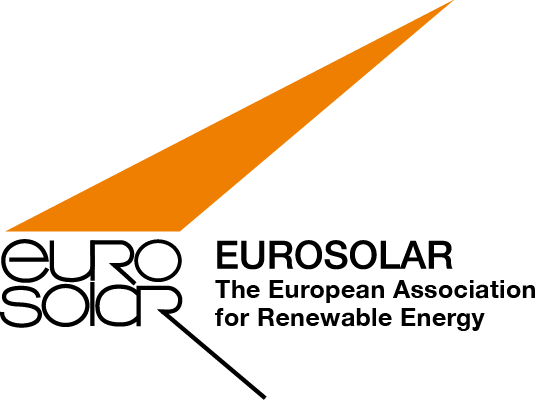Dear Solarians,
after my multiple (among others “Forderungskatalog Energiewende & Klimaschutz” of 3.3.2022) cross-sectoral reflections on the topic of energy transition, I would like to focus today on one (sub-)topic, namely the unleashing of small PV on EFH roofs and/or facades under really comprehensive renunciation of any inhibiting bureaucracy.
Lawyers and advisors must be now times completely strong and look for themselves new “victims”. The simple thesis is: Everyone may install small PV up to 10 kW feed-in power without trade, registration and permission, use the electricity independently of the personal identity in the private house net in the best possible way (at most taxation of energy sales profits as rent [additional] incomes) and feed excess quantities into the public net. For this purpose, a meter with backstop (or bidirectional meter, see below) and a general CE/VDE approval of the inverter (with disconnection in case of frequency shift in the public grid) must be available, as it is the case for other electrical appliances. For the public line, beyond the grid volatility (see below), it makes no physical difference in which direction the 10 kW power flows.
Not the kWp power of the PV modules, but the maximum feed-in power would be the limiting parameter, because the DC side of the system does not concern the grid operator or the legislator at all, and locally higher powers e.g. for car charging stations can be processed without becoming relevant for the grid, if the feed-in power is limited and if necessary (as rarely as possible) regulated. Arbitrary unilateral gagging conditions of the grid operators by TABs should be completely eliminated. There is no technical-physical justification for the currently completely excessive intervention in private property as well as the unequal treatment to other resources such as solar thermal (and the consumption side).
A self-consumption-optimized PV system should be economical to operate today with an ROI of 8-12 years, without the need for additional subsidies. This is even true for oversized systems in the sense of “packing roofs full”, which nevertheless usually do not even cover their own demand in the winter half-year. If one wants to promote oversizing in relation to local consumption to increase the generally available RES-E, one could remunerate the excess quantities appropriately, i.e. with the average PV generation costs of about 5 €¢, if the plant is registered with the grid operator after all and measured with a bidirectional meter.
Whether this still makes sense with a high self-consumption rate, each plant operator must decide for himself. If, for example, there is only 1 MWh of excess feed-in, with 50 €/a being neutralized by metering point operating costs of about the same magnitude, one is unlikely to voluntarily incur the additional administrative overhead.
So no more subsidies? Maybe so, but then a targeted investment promotion (as with e-cars) of storage (if possible with intelligent local load management), because such a system not only supports self-consumption optimization, but also makes the system absolutely grid-serving by largely eliminating the fluctuation so lamented with RE, i.e. minimizes the overriding load management effort and makes the expansion of the grids largely obsolete. How about 300 €/kWh, at 10 kWh/plant and one million (!) subsidized storages thus “floppy” 3 billion € for 10 GWh additional flexibility? That is less than the nonsensical temporary fuel rebate “with the watering can” is distributed and does not require a grueling subsidy discussion in Brussels.
Last but not least: The few rules for small PV plants, but also the perhaps finally streamlined rules for other/larger RE plants, do not require a separate law à la EEG. Instead of launching an additional new law (levy law), all trimmed rules could be integrated into the EEC and the new energy market regulation, namely as core requirements, to which all rules of the phasing out conventional energy sources have to be subordinated.
Oh yes, what else is missing with so much investment design freedom for prosumers? Perhaps a little less bumpy supply chains? How about finally getting going with their own production of Si wafers to solar modules and LiION storage within the EU? And then there’s the vexed shortage of skilled workers. But what does “skilled workers” mean? A car worker on an already dead combustion assembly line could be trained in a few days to become an excellent PV installer, instead of just burning taxpayers’ money with combustion subsidies. When will we finally start not just talking about transformation, but actively pursuing it?
Incidentally, it is imperative to abandon the idea of seeing PV output and electricity consumption as unambiguous parameters of the current and forecast electricity market, because these are becoming increasingly blurred due to increasing self-consumption, sector coupling and storage, i.e. consumption that appears to be reduced externally despite heat pumps and e-mobility. In the future, the target figure must be solely the remaining fossil energy demand, which should approach zero as quickly as possible.
Finally, a comment on the new decisions of the traffic lights to push the expansion of onshore wind power:
Of course, there is – to the delight of the lawyers – again a new law, the “Wind-an-Land-Gesetz”. How about a “wind-on-medium-mountain law” or whatever other creative differentiations can be thought up? And why do you have to make 2% of the area the benchmark? What does that mean in installed capacity, depending on how they are populated now and in the near future? And if the states don’t play along, there will be a suspension of their spacing rules “as punishment.” What’s the point? Why can’t these be generally overturned by a federal law and replaced, for example, by comprehensible technical-physical rules (e.g., no cast shadows in residential areas and a maximum sound impact of n dbA)?
And the most important thing about the social acceptance of wind turbines is pure psychology. As long as people see them as blighting the landscape or their own view, resistance will not decrease. How about a campaign to positively see visible wind turbines, even if they tower over trees, as a CO2-, pollution- and fuel-free, safe and free energy source? If the citizens concerned then still participate in the yield, the brakemen should increasingly fall behind.
With cordial greetings
Claus P. Baumeister

